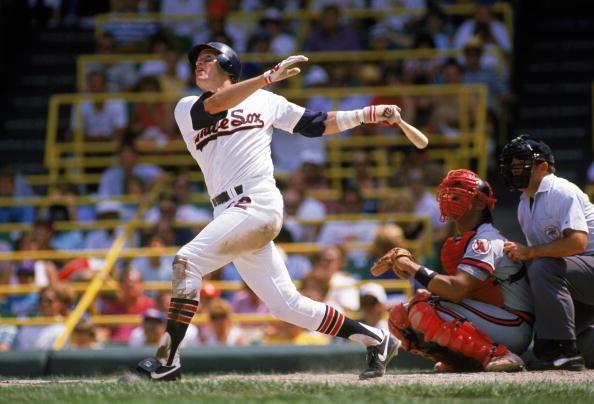A prevailing thought in sports, especially baseball, is that youth wins out. It doesn’t matter how gifted you are as an athlete at some point you will become too old to play at an acceptable level. Science tells us this is the case as well, the human body naturally breaks down over time so a player at 43 should have trouble keeping up with players in their early 20s. This line of thinking is brought up constantly for those playing the position of catcher, and based on the toll the game takes on the body of a catcher this makes perfect sense.
It’s been proven that most ballplayers start to decline at about 28 years old and decline significantly following their age 32 season. This is true for catchers as well, and while they do fall off a higher cliff at 28, once they reach their early 30s they actually tend to decline less than other position players do. Back in 2013, Dave Cameron wrote about this topic at FanGraphs. The basic idea is that among catchers a good 37-year-old catcher isn’t that far behind a good 33-year-old catcher, and ultimately a catcher at 37 is more than likely better than a third baseman at the same age.
There are exceptions to this, in both directions. Some catchers do fall off of a cliff rather quickly, while others stay near the top of the mountain longer than the norm. No catcher better represents the latter than the ageless wonder himself, Carlton Fisk. When Fisk finally retired in 1993 at the age of 45 he had just amassed his first negative bWAR season ever. It took him 24 years in Major League Baseball before he put up a season with a bWAR on the red side of the ledger.
When he came to the Chicago White Sox via free agency in 1981 Fisk was already 33 years old and should have been in the gradual decline phase of his career. Instead, Fisk went on to improve in the following years. His bWAR in 1981 did drop from his 1980 total, but over the next 11 seasons, Fisk’s bWAR would bounce back and forth from really good to great, without ever truly declining. In 1990 at the age of 42, Fisk produced 4.5 bWAR on the strength of a .285/.378/.451 slash line, 127 DRC+, and 9.9 FRAA. The only area of Fisk’s game that truly declined as a 42-year-old was his ability to mosey around the basepaths, as shown in his career-worst -4.4 BRR.
The White Sox didn’t really care about Fisk’s baserunning and for good reason. He hit 18 homers in 1990, provided stellar defense behind the plate, and was the best catcher in all of baseball despite being well past his prime years. Those prime years, 1969-1980, saw Fisk produce a total bWAR of 37.4. Fisk’s decline years (1981-1993) resulted in 35.1 bWAR. While in the best playing ability possible Fisk only produced 2.3 more bWAR. His prime years with the Boston Red Sox lasted 9 years (he was in the minors the majority of his 1969-1971 seasons) while his decline years in Chicago comprised the final 13 years of Fisk’s career. However, Fisk was only worth 0.6 bWAR in his final two years, when his decline really did hit him hard. Boston’s beloved son took a few years to get going, but once he did he remained the epitome of consistency.
The impetus for looking at Fisk’s career came about because I’m not sure his type of player will be found in MLB in the coming years. At least, not among position players. Facts don’t lie, and if the facts state that the majority of position players decline hard around 32 and then gradually decline more after that then it’s only natural that MLB would be full of fewer 32 and over players than in years past. An outlier like Fisk will remain forever an outlier because players aren’t allowed to stick around and buck the accepted trends as he did. Carlton Fisk produced at a high level well into his 40s, because to him age was never anything but a number.
Lead photo courtesy of Jonathan Daniel – Getty Images




